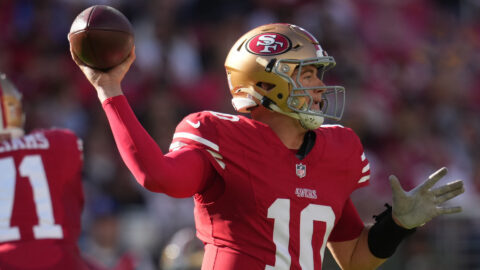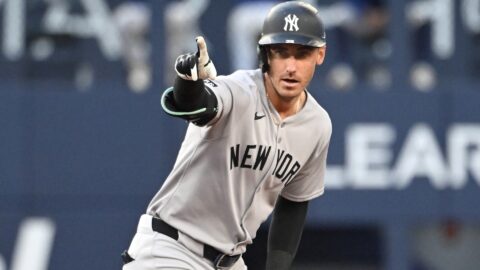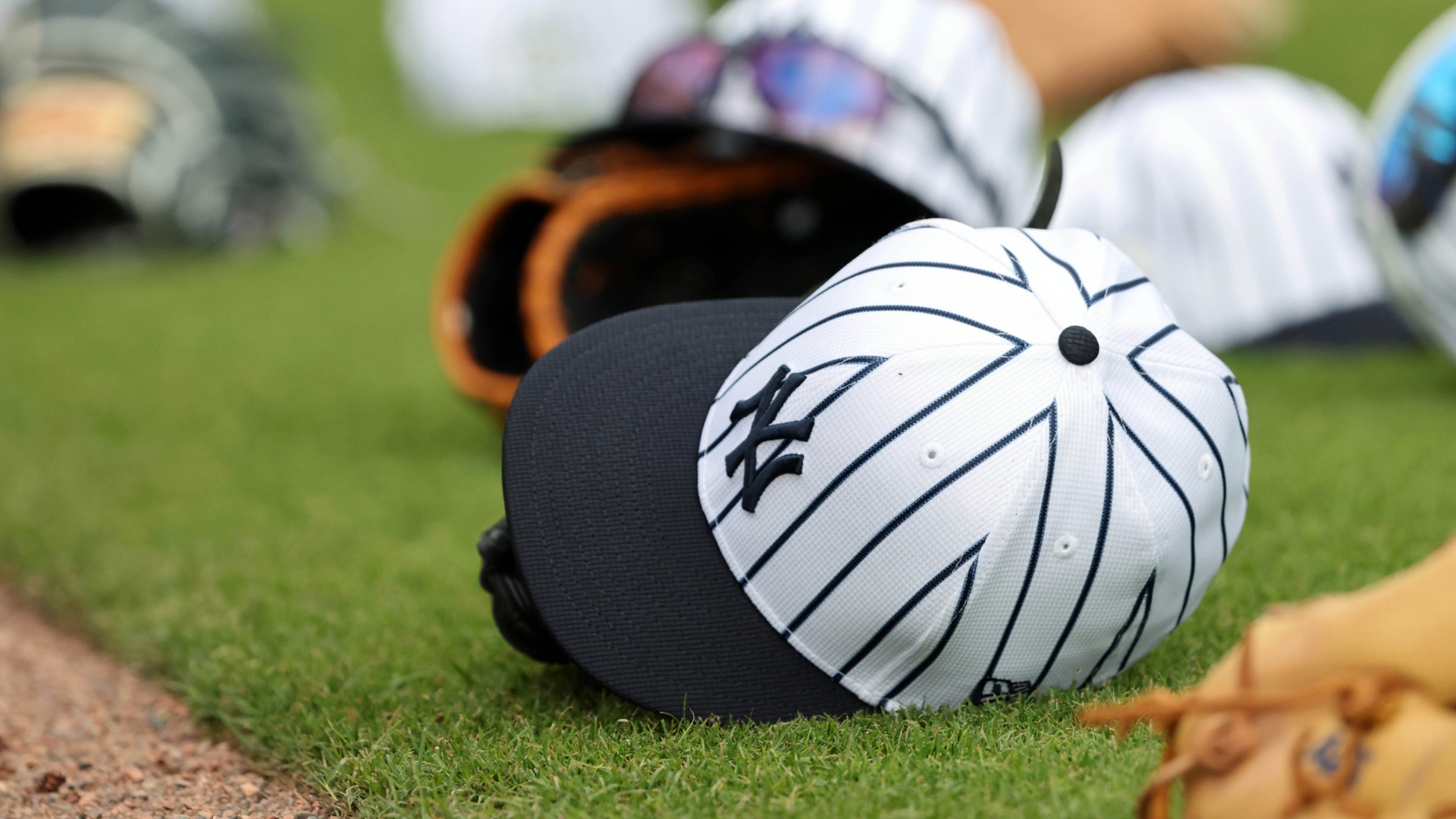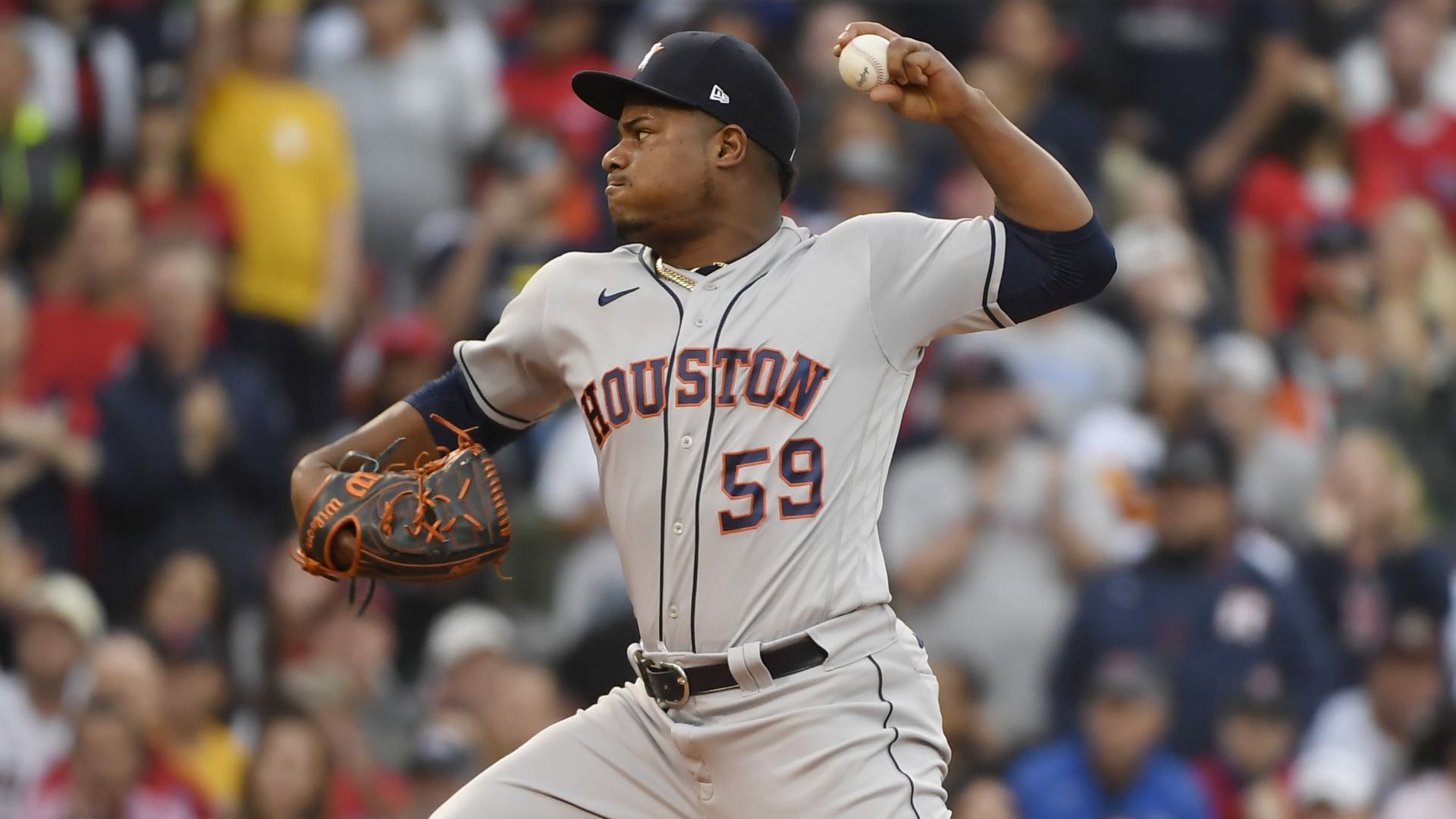This week's 20 thoughts are exclusively about wide receivers. It didn't exactly start out that way, but it was time to feed the monster. I wanted to put some numbers behind one of my longstanding arguments, and they were too good to pass up.
1. I've pretty much always subscribed to the theory that it's a waste to spend a top-10 draft pick on a wide receiver because other positions can impact the game in a far greater way. Mostly, I center this debate around Detroit's Calvin Johnson, who was the second pick in the 2007 draft and, in my opinion, is the most exciting receiver to watch in the league. But as I've written a few times before, the Lions are 15-49 since drafting Johnson.
2. This, by no means whatsoever, is exclusive to Johnson. I went through the 10 drafts from 2001-10 and found that teams have had almost no success after taking a wide receiver in the top 10.
3. Here are the 14 wide receivers who were taken in the top 10 since 2001.
- David Terrell (Bears, No. 8, 2001)
- Koren Robinson (Seahawks, No. 9, 2001)
- Charles Rogers (Lions, No. 2, 2003)
- Andre Johnson (Texans, No. 3, 2003)
- Larry Fitzgerald (Cardinals, No. 3, 2004)
- Roy Williams (Lions, No. 7, 2004)
- Reggie Williams (Jaguars, No. 9, 2004)
- Braylon Edwards (Browns, No. 3, 2005)
- Troy Williamson (Vikings, No. 7, 2005)
- Mike Williams (Lions, No. 10, 2005)
- Calvin Johnson (Lions, No. 2, 2007)
- Ted Ginn Jr. (Dolphins, No. 9, 2007)
- Darrius Heyward-Bey (Raiders, No. 9, 2009)
- Michael Crabtree (49ers, No. 10, 2009)
4. There were no receivers taken in the top 10 in 2002, 2006, 2008 and 2010. I found it interesting that this process alternated from year to year from 2005-10, with at least two top-10 receivers in the odd-numbered years and zero in the top 10 in the even-numbered years. I have to believe that much of that has to do with teams looking at draft mistakes from the previous year and not wanting to commit the same one. You could also argue about the available talent, but seriously, take another look at those 14 names. Very few of them had any talent at all.
5. It's time for some numbers. Those teams went a combined 94-130 during the receiver's rookie year, which calculates to an average of 6.7 victories. That number might not be completely fair because the vast majority of teams picking in the top 10 are terrible.
6. So let's stretch it out. Those teams combined to go 361-528 with those 14 receivers on their roster. No big deal, just 167 games below .500.
7. Eight of those 14 teams never made the playoffs with that receiver on their roster. The ones who did were Ginn, Williamson, Fitzgerald, Reggie Williams, Terrell and Robinson.
8. Only one of those teams made a Super Bowl appearance, and for what it's worth, the 2008 Cardinals were once considered the worst team to ever make it to the playoffs. Their toe-to-toe battle with the Steelers erased that claim, though.
9. Of the 10 players on the list who were drafted from 2001-05, only Fitzgerald and Andre Johnson earned second contracts from their team. On the other side of that, Ginn was traded after his third season with the Dolphins, so he didn't complete his rookie deal.
10. It's worth noting that the three best wide receivers in the NFL — Calvin Johnson, Andre Johnson and Fitzgerald, in whatever order you choose — weren't just top-10 picks. They were top-three picks, so if you do it right, you can come out of the draft with an elite wideout.
11. But again, the three of them have combined for a 114-190 record during their careers. They've totaled 19 seasons in the league, which gives them an average of six wins per season. If that's not the most important statistic to back my theory, I don't know what is.
12. Georgia wide receiver A.J. Green promises to join that elite group, and he might even be in the same company as Johnson, Johnson and Fitzgerald by 2012 or 2013. Green is a surefire top-10 pick, and it would be surprising if he falls out of the top six. While his skills will translate to the NFL, history dictates that he won't make a winner out of the Panthers, Broncos, Bills, Bengals, Cardinals or Browns.
13. Back to the original 14 wideouts for a moment. Reggie Williams (45-35) and Robinson (35-29) were the only two players who had a winning record during their tenure with the teams that drafted them. And obviously, since neither player received a contract extension from that team, those winning records had very little to do with their contributions.
14. I ranked the 10 best active wide receivers in the NFL on Tuesday, and it was a fairly difficult list to put together after the top three. Players like Roddy White, Reggie Wayne, Wes Welker and Greg Jennings all belonged in the list, but their location was debatable.
15. After that, Nos. 8-10 could have included a host of players, but I went with Brandon Marshall, Hines Ward and Anquan Boldin. I also considered Dwayne Bowe (too inconsistent), Brandon Lloyd (only one good season, despite his league-high 1,448 receiving yards in 2010), Marques Colston and Miles Austin. Colston could probably crack the top 10 if Drew Brees didn't spread it around so much, which isn't a bad thing but hurts Colston in this category. Santana Moss probably deserved a little more consideration, especially after catching 93 passes last season. Terrell Owens, too.
16. DeSean Jackson is one of the league's great deep threats, but I didn't include anyone's special teams contributions for this list, so that limited him. Jackson led the league with 22.5 yards per catch in 2010, but he only caught 47 passes on 96 targets. He's the only player in the top 40 in receiving yards who caught less than 50 percent of his targets, and he's the only player in the top 25 in receiving yards with fewer than 50 receptions.
17. It's about time Bowe broke out as a dominant force in the red zone, as he led the NFL with 15 touchdown receptions. Bowe, a first-round pick in 2007, has had 70 receptions in three of his four seasons, but some off-the-field concerns and a 44-catch campaign in 2009 have soured his reputation. Bowe was a freak coming out of LSU. I remember watching him in a game against Arkansas when he caught a crossing pattern and then trucked a linebacker before breaking free to the sidelines. There's no doubt he's still got that ability, but he's got to keep it together.
18. Let's take a look at where the other receivers in my top-10 list were drafted: White (Falcons, first round, No. 27, 2005), Wayne (Colts, first round, No. 30, 2001), Welker (undrafted), Jennings (Packers, second round, No. 52, 2006), Marshall (Broncos, fourth round, No. 119, 2006), Ward (Steelers, third round, No. 92, 1998) and Boldin (Cardinals, second round, No. 54, 2003).
19. There isn't a science that dictates the best round to pick a wideout, but the second and third rounds look like good spots to take that gamble because a vast majority of them either don't work out or tend to be entirely replaceable. Also, players taken in the second and third rounds have some type of major flaw that teams discovered during the scouting process, so at that point, teams will typically start to look at athleticism and the player's willingness to be coached. Aside from Jennings and Boldin, here's a look at the successful second-round wideouts in the last decade: Jordy Nelson (2008), DeSean Jackson (2008), Sidney Rice (2007), Steve Smith (2007), Vincent Jackson (2005), Devery Henderson (2004), Jabar Gaffney (2002), Antonio Bryant (2002), Deion Branch (2002), Chad Ochocinco (2001) and Chris Chambers (2001).
20. It's easy to criticize the Patriots for trading out of the 52nd spot in 2006 in order to select Chad Jackson at No. 36, while the Packers benefited by snagging Jennings. Jackson was widely considered to be one of the two best wide receivers in that draft, along with Santonio Holmes. Maybe that's because that draft class was so putrid, and Jackson's athleticism made him stick out more than he normally would have. Really, there were only four good wide receivers in the 2006 class — Holmes, Jennings, Marshall and Colston — and the only mediocre wideout in that class was Jason Avant. Those are the only five players from 2006 who have at least 100 career receptions. Think about that. Only five players from that class have been good enough to average at least 20 receptions per season.



